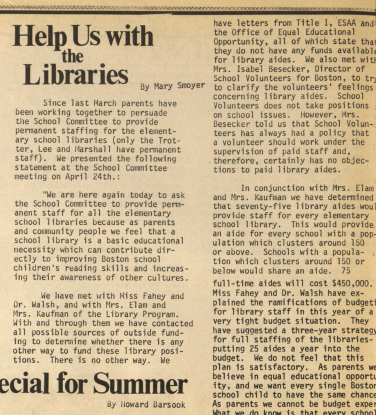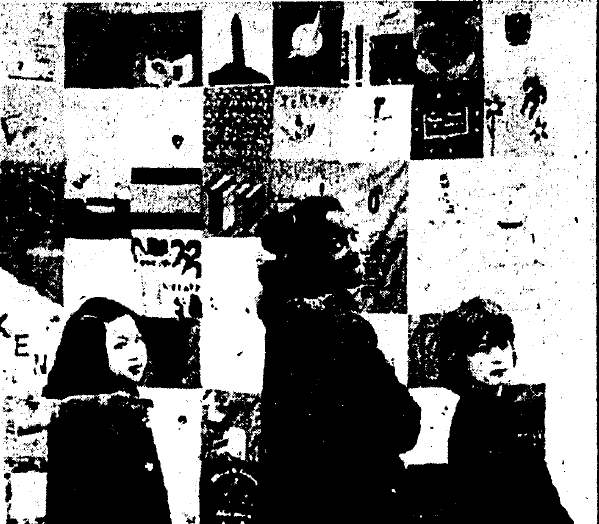(Read Part One of The Library Program here.)
 It was during the second year of the program that Margaret Brown met Polly Kaufman at a parent volunteering conference. Kaufman joined the program and quickly ascended to a leadership role. Though she was a library assistant for many years, she attended Boston University classes to gain additional qualifications.
It was during the second year of the program that Margaret Brown met Polly Kaufman at a parent volunteering conference. Kaufman joined the program and quickly ascended to a leadership role. Though she was a library assistant for many years, she attended Boston University classes to gain additional qualifications.
Brown and Kaufman continued to make valuable connections with Boston Public Schools, and eventually asserted enough influence to compel the School Committee to pass a resolution that, “Every school building in the Boston School System [would be] equipped with a central library”. This edict gave the Library Program the legitimacy it needed to expand into many more schools, reversing the rule that parents were not allowed to volunteer in their own children’s schools.
Kaufman was extremely committed to social justice and had a profound effect on her staff. Mary Smoyer, one of the volunteers who had come from a suburban lifestyle, reflected on the experience: “I grew up in a white, suburban area. This was my connection to an urban environment. You know, I went to college, my children all went to these very upscale colleges, and now my grandchildren are all going through the same thing. This was my exposure to a whole other world of children with a very different set of opportunities.”
One of Kaufman’s primary goals (which was also shared by SVB) was to ensure that volunteers entering the schools didn’t only represent the white suburbs. She aimed to include volunteers from the Black and Latino communities that made up a majority of the students. This inclusion was prioritized even further after the assassination of Dr. Martin Luther King. From Kaufman’s account:
“The following year was a year of extreme militancy in the black community. The suburban volunteers asked the black parents many times, ‘do you still want us?’ and were answered with ‘We want what is best for our children.’ But they knew, and the Library Program team knew, that white volunteers where only a stopgap measure; that more white faces were not what was needed.”
The Library Program insisted that volunteers for new libraries in the King and Timilty schools be recruited directly from the communities that the schools served. They also created a committee rostered by black community leaders and teachers to select books about black lives, which didn’t yet exist in the Boston Public Schools.
Along with addressing racism, the leaders believed that the Library Program could promote women’s advancement. With this in mind, the Library Program leaders created a library science major at the University of Massachusetts. The course consisted of two major classes, “The Library and the City Child,” and “Books and the City Child.” It was open to students studying education at the University and all volunteers in the Library Program.
Kaufman’s goal was to help women volunteering in the library earn professional or paraprofessional status, thus discovering a career in school libraries. Working in libraries would provide income and a manageable schedule for their families. With a degree, many mothers found a pathway to a rewarding career that hadn’t existed previously.
The classes emphasized that a library could greatly benefit children who lacked the basic tools to educate themselves outside of school. They also showed how libraries improved literacy if they inspired the child to read for fun. Finally, Kaufman’s classes emphasized that the children’s books must be of high interest and relatability, or the program would never work. A notable assignment for the class was to have each student review a different volume of the Nancy Drew series and consider it from the minority, poor, and female perspectives. Using those judgements, they decided whether or not the book should be included in the school library.
Many graduates from the program received certificates to become library paraprofessionals, and moved from volunteering to paid positions in the school libraries. A few of them remain in the libraries to this day.
In the fifth year of the program, the 100th school library opened its doors. To celebrate the event, a volunteer organized a special thank you from the schools to the directors, Kaufman and Brown. Eighty of the schools with libraries contributed two quilted squares designed by students, sewn onto larger quilts and gifted to the two directors. The ceremony was inspired by the “Stone Soup” story, in which hungry soldiers trick members of a small town to come together with their own meager resources to make a banquet that feeds everyone in abundance.

Students in front of the quilt gifted to Kaufman and Brown (pictured above).
The Library Program catalyzed resources from the school and community that no one even knew existed. It created opportunities for students who now had access to books they didn’t have before, as well as for the volunteers, many of whom found a rewarding career.
While the Library Program eventually ended its involvement with SVB, it serves as an excellent reminder of what can be created when an organization focuses on the needs and assets of the community it serves. Today, Boston Partners in Education is still building the connection between local communities, schools, and expanding opportunities for students.
